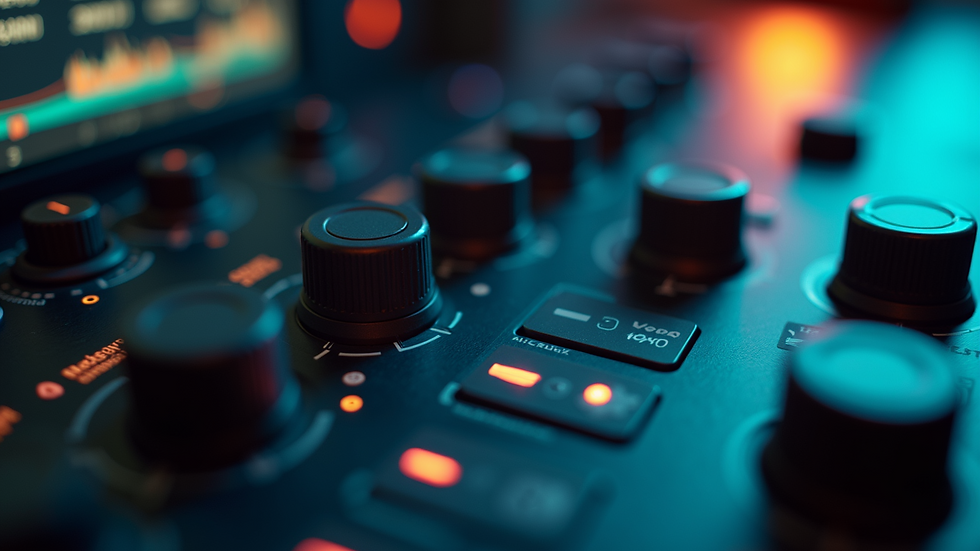Enhancing Game Development with Asset Support
- Mimic Gaming
- Oct 16
- 4 min read
You want to build games that captivate players and push the boundaries of creativity. To do that, you need game asset optimization that accelerates your production pipeline and elevates your visual storytelling. Optimized assets reduce load times, improve frame rates, and streamline collaboration across your team. This means faster iterations, better quality, and a smoother path to launch.
In this post, you will discover how to leverage game asset optimization to transform your development process. You will learn practical strategies to enhance 3D art, animation, and real-time engine integration. By the end, you will be equipped to boost your game’s performance and visual fidelity while cutting costs and timelines.
Why Game Asset Optimization Is a Game Changer
Game asset optimization is not just a technical necessity - it is a strategic advantage. When you optimize your assets, you:
Reduce file sizes without sacrificing quality
Improve rendering efficiency for smoother gameplay
Enhance cross-platform compatibility to reach wider audiences
Streamline team workflows by standardizing asset formats and pipelines
For example, consider a AAA open-world game with thousands of unique 3D models. Without optimization, the game would suffer from long load times and frame drops. By optimizing polygon counts, textures, and animations, you ensure the game runs seamlessly on target hardware.
Optimization also enables rapid iteration. When your assets are lightweight and well-structured, your artists and developers can quickly test changes and polish details. This agility is crucial in today’s competitive market.

Best Practices for Game Asset Optimization
To maximize the benefits of game asset optimization, follow these proven techniques:
1. Optimize 3D Models
Reduce polygon count by using LODs (Levels of Detail) to maintain visual quality at different distances.
Use efficient UV mapping to minimize texture stretching and wasted space.
Remove unseen geometry inside models to save resources.
Apply mesh compression where supported by your engine.
2. Streamline Textures and Materials
Compress textures using formats like DXT or ASTC without visible quality loss.
Use texture atlases to combine multiple textures into one, reducing draw calls.
Limit texture resolution to what is necessary for the target platform.
Leverage PBR (Physically Based Rendering) materials for realistic lighting with fewer texture maps.
3. Optimize Animations
Simplify rigging by removing unnecessary bones.
Use animation compression to reduce file size.
Bake complex animations into simpler keyframes.
Reuse animation clips across characters when possible.
4. Integrate Efficiently with Real-Time Engines
Automate asset import pipelines to maintain consistency.
Use engine-specific optimization tools like Unreal’s Nanite or Unity’s Mesh Simplifier.
Profile performance regularly to identify bottlenecks.
Implement streaming and culling techniques to load assets dynamically.
By applying these best practices, you ensure your assets are both visually impressive and technically sound.

How to Leverage Expert Support for Asset Optimization
You don’t have to do this alone. Partnering with a specialized provider can accelerate your asset optimization efforts and free your team to focus on core gameplay and design.
Working with a trusted partner like Mimic Gaming gives you access to expert 3D art, motion capture, and real-time engine integration services. Their team understands the nuances of AAA game development and can tailor asset optimization to your project’s unique needs.
Benefits of expert support include:
Access to cutting-edge tools and workflows
Faster turnaround times on asset delivery
Consistent quality across all asset types
Scalable resources to match your project size
For example, Mimic Gaming’s motion capture services can produce highly optimized animations that integrate seamlessly into your engine, reducing the need for costly rework. Their 3D artists specialize in creating low-poly models with high visual fidelity, perfect for modern game engines.

Implementing Asset Optimization in Your Pipeline
To embed game asset optimization into your development pipeline, follow these steps:
Audit your current assets to identify optimization opportunities.
Define optimization standards for polygons, textures, and animations.
Train your team on best practices and tools.
Automate repetitive tasks with scripts and engine plugins.
Integrate continuous profiling to monitor performance impacts.
Collaborate with external experts for specialized tasks.
Iterate and refine based on player feedback and technical metrics.
This structured approach ensures optimization is not an afterthought but a core part of your production cycle. It also helps you maintain high quality while scaling your project.
Drive Your Game’s Success with Optimized Assets
Optimizing your game assets is a critical step toward delivering a polished, high-performance game. It reduces technical debt, accelerates development, and enhances player experience. By investing in game asset optimization, you unlock new creative possibilities and ensure your game stands out in a crowded market.
Take action now. Evaluate your current asset pipeline, adopt best practices, and consider partnering with experts who can elevate your project. With the right approach, you will streamline production and boost your creative output.
Explore how gaming asset support can transform your development process and help you create amazing AAA games. Don’t settle for less - optimize your assets and power your game’s success today.
.png)



Comments